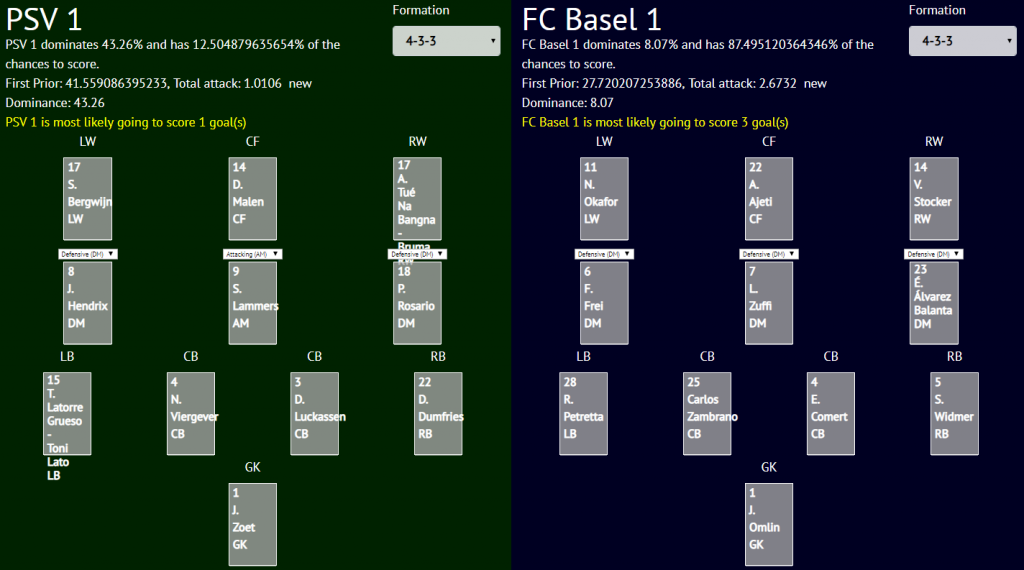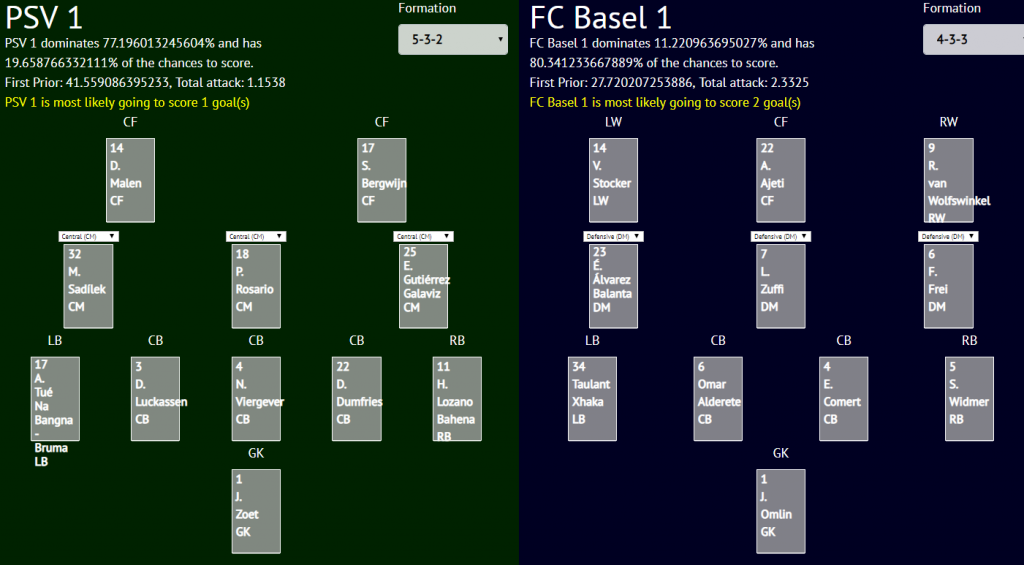Player agents often complain about the lack of loyalty of the players they have signed. They assume that loyalty is an inherent trait some players have and others don’t. Of course, it is painful to see one of your biggest talents sign with a different agency just before their big breakthrough. In most cases leaving the agency has little to do with loyalty and more to do with the player’s brain type and the ABC-model. In this article I will describe what an agent can do to breed loyalty into his players.
First of all, the whole idea of people having traits is a backward idea. In reality people acquire knowledge through associative learning and skills through instrumental learning. In terms of football: associative learning gives you game intelligence and instrumental learning gives you technique. How do we know whether a player has game intelligence or technique? We see that in how the player behaves. For we cannot look into the soul of the player.
The behavioral patterns of a player are, for the most part, acquired through instrumental learning. Through instrumental learning the brain creates probabilistic relationships between the behavior and what this behavior gets you. The brain of the star player has learned in extreme detail how to shoot the ball in order to get the result the player wants: a goal. Instrumental learning works according to the ABC-model. In this model A stands for Antecedent which is everything that happens before the behavior or is necessary to make the behavior possible. B stands for Behavior, the desired or undesired behavior you are targeting. C stands for Consequence which is everything that happens after the behavior. There is overwhelming evidence that Consequences have a much, much bigger influence on our future behavior than Antecedents. Nevertheless, in most cases we continue to try to influence people through Antecedents rather than through Consequences.
‘So when it comes to loyalty, there isn’t an inborn trait that some players have and others don’t. Instead, there is the history of all the Consequences that the agent has given in response to the behavior of the player. To understand this you first have to specify the desired behavior. To do this we have to take MARCO into account. Behavior is only behavior if it is:
- Measurable. If you can’t measure it, it ain’t behavior.
- Active. If a dead person can do it, it ain’t behavior.
- Reliable. If you can’t measure it reliably, i.e. different people come up with completely different measurements, it ain’t behavior.
- Controlled. If it is not under the control of the actor, it ain’t behavior.
- Observed. If it is impossible to observe, it ain’t behavior.
As you can see: loyalty ain’t behavior. Loyalty can’t be measured, a dead person can be loyal, if you can’t measure it, you can’t measure it reliably, loyalty is not under the control of the actor and you can’t observe it directly. So we have to specify the behavior that makes us think that a player is loyal. Most agents would specify that behavior as the player not signing up with another agent. But here, the first mistake is made. Dead persons never sign contracts with other agents. So not signing a contract, ain’t behavior either. Instead the right specification is to honor the contract the player signed. Dead persons can’t honor contracts. You can measure how long the player is honoring the contract and you can measure this reliably. Honoring the contract is completely under the control of the player. And we can easily observe the player honoring the contract.
So the desired behavior is honoring the contract and the undesired behavior is signing with another agent. The ABC-model teaches us that players do more of what has been rewarded with positive consequences in the past; in the same way players do less of what has been punished or penalized in the past. A player breaking his contract and signing with another agency, doesn’t do so out of disloyalty, but because honoring the contract has not given him enough positive consequences. On top of that honoring the contract with the agency always has at least one negative consequence. For the fee that the player pays the agent, is experienced in the brain as a penalty. Players want money, so spending money is a negative consequence. It is the task of the agent to compensate for this negative consequence, by more positive consequences. At first the agent does this by promising the player more positive consequences. But these promises are Antecedents and have little impact on the future behavior of the player.
Only when the player really does get what he wants as a result of him honoring the contract, only then the player gets a positive consequence. So the ability to get the player signed with a big club for a high salary, is the most important job of the agent. Yet, this happens only every few years. That means that after the first signing the agent made possible, it will take a long time before the next big positive consequence will be there to reinforce the player’s brain to honor the contract. Furthermore, this future positive consequence is also uncertain. The player might get an injury that ends his career. Or it may turn out that he is less talented than thought before. Or just a case of bad luck. Research clearly shows that long term uncertain positive consequences have way less impact on the behavior of a player than short term certain consequences. Therefore the agent has to make sure that the player is rewarded short term with a high degree of certainty for honoring his contract. If an agent does this then the player will continue to honor his contract and everybody will think that he is a very loyal player. Whereas in fact it is the behavior of the agent rather than the player that makes the player appear to be loyal.
What kind of short term positive consequences are there for the agent to give to the player? In short the agent can choose between the following categories:
- Material rewards:
- Direct material rewards: food or drinks.
- Indirect material rewards: money or valuables.
- Social rewards:
- Attention. It is important that the agent regularly checks in with the player to ask how he is doing.
- Compliments. If the player achieves something on the pitch during a match, make sure he is complimented for it as soon as possible after the match.
- Status. An agent can create different classes of players within the agency so a player feels he is promoted within the agency as he develops. Just make sure that you set-up the program in such a way that there are only winners.
- Information. Many players love to have access to the statistics of how they did or video’s of their best actions.
- Opportunities to develop one self. Players not only want to become better at football, they also want to develop themselves mentally.
- Keep their social media up to date. Keeping their social media up to date has negative consequences for players as it takes time and energy. So often they love it if the agent takes care of it. Updating their social media accounts as soon as possible so the player sees his fans rewarded as soon as he comes off the pitch, is a positive consequence for most players. Also because this enhances their status.
As players most of the time get plenty of material rewards, the best choice for agents is to go for social rewards. The easiest way to discover what kind of rewards the player is looking for is by asking the player himself. This may seem obvious, yet it is the second mistake most people who use the ABC-model make. They fall into the pit called the Perception Error and assume they know what is a positive reward for the player. So ask your players, how they can be rewarded on top of everything they already get from the club.
Brain types
The third mistake is disregarding brain types. In the same way that there are different body types, we also have different brain types. Your brain type determines your evolutionary behavioral patterns. These behavioral patterns determine:
- How you are motivated.
- How you deal with your emotions.
- How you learn.
Brain types determine in a large part how the Dopamine reward system in your brain works. Therefore, if you know someone’s brain type you can predict with a high probability how you can reward him with positive consequences. Here is the list of positive consequences for each brain type:
Type #1, the Perfectionist can be rewarded with control.
Type #2, the Helper can be rewarded with love and attention.
Type #3, the Successful Worker can be rewarded with material rewards and hopeless projects where he has a small chance of becoming the project’s hero.
Type #4, the Romantic can be rewarded with justice served.
Type #5, the Analyst can be rewarded with autonomy, personal freedom and being left alone.
Type #6, the Loyalist can be rewarded with safety.
Type #7, the Hedonist can be rewarded with new things to do and variation.
Type #8, the Boss can be rewarded with power.
Type #9, the Mediator can be rewarded with harmony.
As loyalty also is an evolutionary behavioral pattern, some brain types have special issues concerning loyalty as can be seen from this list:
Type #1, the Perfectionist has no special issues with loyalty. Yet, as Perfectionists feel that they must act in accord to the morals of the group, it helps if you make honoring your contract one of high principles endorsed by the whole group.
Type #2, the Helper has no special issues with loyalty. Yet their craving for love and attention is so high that if the agent fails to make compliments, give little presents and keep in touch with them, the agent risks being put in the so-called out group and that will lead to a parting of the ways.
Type #3, the Successful Worker has an issue with loyalty. Successful Workers are very loyal when they are relaxed. If they are stressed, they seek social stability. In both cases it is unlikely that they would break their contract. Unfortunately, when neither stressed, nor relaxed, they become reckless, antisocial and highly sensitive to material rewards and promises of material rewards. In that state, they can be easily poached by other agents.
Type #4, the Romantic has no issues with loyalty. In fact, if breaking the contract is seen as an injustice it is unlikely that the Romantic will break the contract. On the other hand, if the agent’s actions appear to be unjust toward the player, other players, clubs or people in general, they might very well break their contract even if it means a worse outcome for themselves.
Type #5, the Analyst has no issues with loyalty. If it is clear for the Analyst that he has lots of autonomy, personal freedom and is left alone, he will not risk losing this by signing with another agent.
Type #6, the Loyalist has issues with loyalty as the name implies. It will take quite some time and thorough research by the Loyalist before the Loyalist signs with an agent. Nevertheless, once they sign, they honor their contract. Not so much out of loyalty, but because they see too much risk in breaking the contract. Unfortunately, Loyalists are probably underrepresented in football as the game and the culture are not their thing.
Type #7, the Hedonist has no issues with loyalty. The one thing to watch out for is that if the Hedonist stresses he becomes quite sensitive to material rewards. Furthermore, there is the risk that he lacks a clear sense of morality. Meaning that if stressed, the Hedonist can easily be bribed, even illegally, to sign with another agent.
Type #8, the Boss has no issues with loyalty. In fact, the Boss likes to receive a clear manual from a higher power he respects. He then blindly follows the rules in the manual and will in fact enforce these rules with other players. So if there is a rule in the manual that states that you always will honor your contract he will do so and he will try to forcefully make other players within the agency comply with that rule as well.
Type #9, the Mediator has no issues with loyalty. In fact, the Mediator is likely to become dependent on the agent and would find it emotionally difficult to leave the agency. As most players have a type #9 brain, this is the common experience of agents. They mistake these dependency issues for loyalty and then complain that the other players lack these issues.
So besides using the ABC-model to positively reinforce honoring the contract, it is also smart to take into consideration the brain type of each player.

























